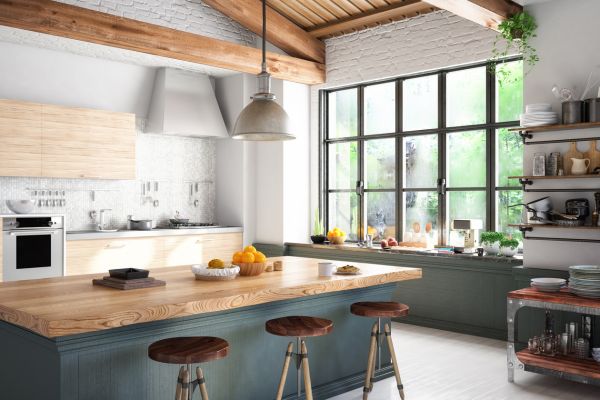If there’s one spot in the home that gets cluttered faster than you can blink, it’s the kitchen cabinets. You open the door to grab a mug, and suddenly five bowls tumble out. Sound familiar? The truth is, most of us don’t have endless cabinet space, but with the right approach, even the tiniest kitchen can feel open, neat, and—dare I say—fun to cook in. So, let’s dive into some practical, real-life kitchen cabinet organization tips that’ll actually make your life easier.
Start with a Fresh Slate
Before you even think about organizing, you’ve got to empty those cabinets. Yes, all of them. It might feel overwhelming, but pulling everything out gives you a clean view of your space and a chance to see what you actually own. Chances are, you’ll find duplicates, expired pantry items, or that random gadget you haven’t touched since 2010. The thing is, decluttering first makes the rest of the process so much smoother.
Group Similar Items Together
One of the simplest kitchen cabinet organization tips is to keep like items with like. Think of it this way: you shouldn’t have to search three cabinets to find a cereal bowl. Plates with plates, cups with cups, baking gear in one area. It cuts down on the daily scavenger hunt and makes your cabinets feel intentional instead of chaotic. Plus, it saves you from buying duplicates when you can’t find something you already own.
Use Vertical Space Like a Pro
Cabinet height is both a blessing and a curse. If you’re not using vertical space, you’re basically wasting half the cabinet. Stackable shelves or risers are lifesavers for things like plates, mugs, or canned goods. You can double your storage instantly just by giving each item its own “floor.” And let’s be real—stacking everything on top of each other without risers is basically begging for an avalanche every time you open the door.
Add Pull-Out Organizers
Digging into the back of a cabinet is like going into a dark cave. You know something’s there, but you can’t quite reach it without knocking over three other things. This is where pull-out organizers come in. Whether it’s a drawer-style basket for pots or a sliding shelf for pantry goods, they make every inch of space usable. It’s one of those kitchen cabinet organization tips that feels like a small luxury, but once you try it, you’ll wonder how you ever lived without it.
Think Beyond Traditional Storage
Not everything has to sit flat in a cabinet. Hooks on the inside of doors can hold measuring spoons or oven mitts. A tension rod can keep cutting boards upright. Even magazine holders (yes, the ones meant for offices) can store foil, parchment paper, and plastic wrap. The point is, kitchen storage doesn’t have to be conventional—it just has to work for your space.
Prioritize Everyday Items
Here’s the thing: not everything in your kitchen deserves prime real estate. Keep your daily essentials—mugs, plates, spices—front and center. The turkey roaster you only use once a year? That can live on the top shelf. Prioritizing makes your kitchen flow better because you won’t be climbing on a stool every morning just to grab a cereal bowl.
Label When It Makes Sense
Now, I’m not saying you need to go overboard with Pinterest-worthy chalkboard labels, but a little labeling goes a long way. Especially for pantry-style cabinets where you’ve got jars, bins, or baskets. Labels help everyone in the house know where things go, which means you’re not the only one playing “where does this belong?” every time groceries come in.
Embrace Clear Containers
This might sound basic, but switching from random packaging to clear containers is a total game-changer. Pasta, rice, flour, snacks—they all look neat and uniform in see-through bins. Plus, you can see exactly how much you have left, which saves you from surprise mid-recipe disasters. It’s one of those kitchen cabinet organization tips that blends practicality with aesthetics.
Don’t Forget the Corners
Corner cabinets are tricky, and honestly, they often become the black hole of the kitchen. If you’ve got one, consider a lazy Susan or tiered turntable. Suddenly, what used to be wasted space becomes easy-to-reach storage for spices, condiments, or baking supplies. It’s such a simple fix, but it can totally transform how you use those awkward spots.
Keep It Flexible
Here’s a reality check: your kitchen cabinet setup will never be “done.” Life changes, cooking habits evolve, and sometimes you just buy new stuff. The best kitchen cabinet organization tips are the ones that allow for flexibility. Use bins that can move, shelves that adjust, and systems that adapt. That way, your cabinets don’t just look good for a week—they actually stay functional long-term.
Make Maintenance Part of the Routine
Let’s be real for a second: organizing once and then never touching it again? That’s not how it works. Just like cleaning the fridge, maintaining your cabinets should be part of your kitchen routine. Every month or two, do a quick check. Toss expired goods, shuffle things back where they belong, and maybe even donate items you’re not using. Staying on top of it makes the process painless instead of overwhelming.
The Payoff of an Organized Kitchen
At the end of the day, kitchen cabinet organization isn’t just about having a Pinterest-worthy pantry. It’s about making your life easier. When everything has a place, cooking feels less stressful, cleanup is faster, and you’re less likely to waste food or money. Honestly, it’s one of those home upgrades that doesn’t cost much but pays you back daily in peace of mind.
Final Thoughts
Organizing your cabinets isn’t about achieving perfection—it’s about creating a system that works for you and your family. Whether you’re working with a tiny apartment kitchen or a sprawling setup, these kitchen cabinet organization tips can help you maximize space and minimize chaos. So the next time you open your cabinets and something doesn’t fall on your head, you’ll know all that effort was totally worth it.




